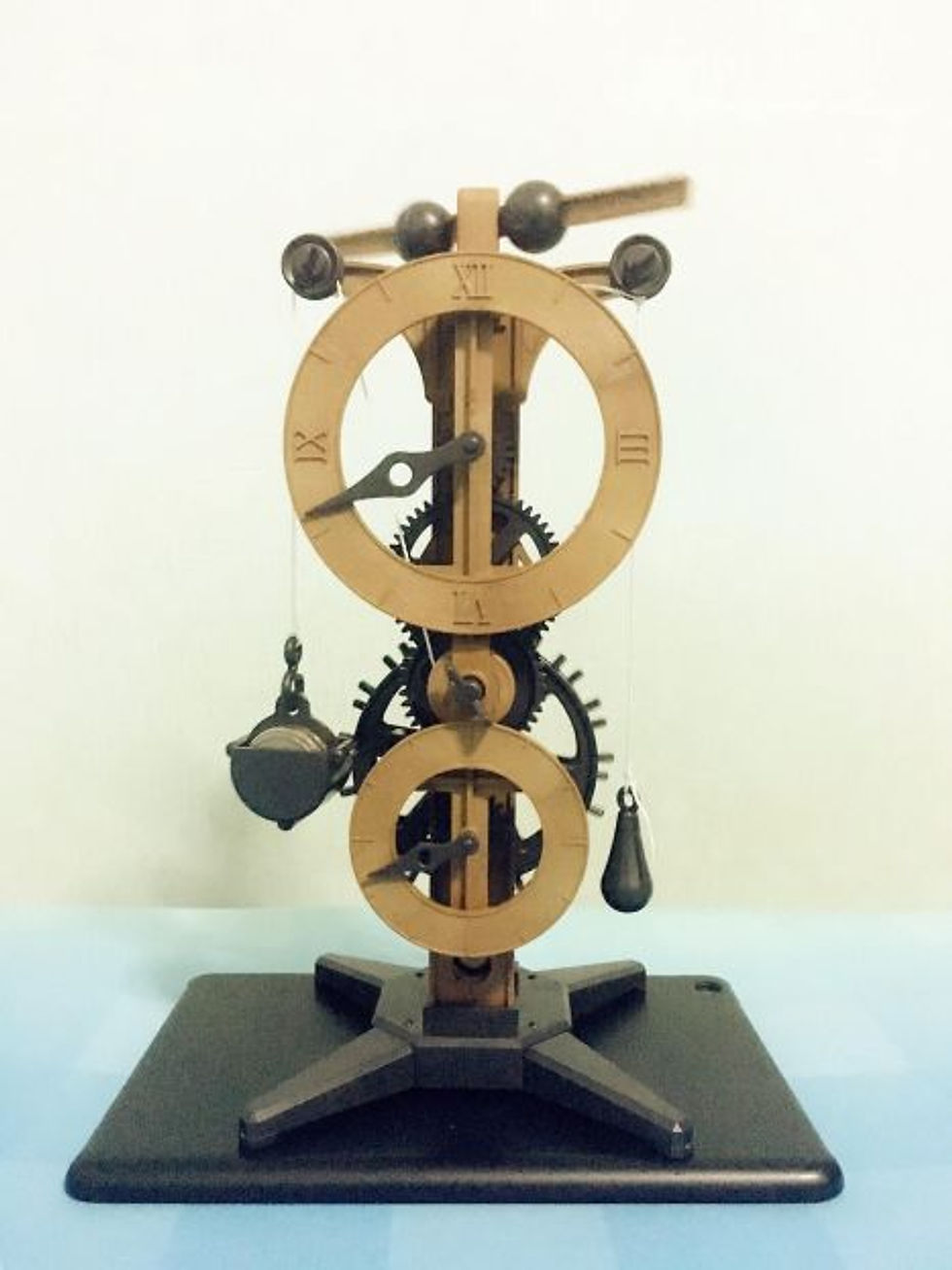Clock (no batteries needed)
- mademyownco
- Jan 1, 2018
- 3 min read
Updated: Aug 9, 2020
The idea of building a clock from scratch that can run on its own (without batteries) sounded really interesting. We bought this assembly box set from a shop in Taiwan that claimed to do just that – it’s based on a clock that runs on an escapement sketched by Leonardo Da Vinci.
I was planning to complete the clock to check off the one thing I am supposed to make in December (had a KPI to make at least once thing every month in 2017). We had originally assumed this would be an easy exercise (clearly didn’t learn from my experience with the Musical Carousel Box), but it turned out slightly trickier than expected.
Interestingly, we were chasing time to finish the clock by 2017 (which we unfortunately didn’t – we were an hour or so late).

Box set for the clock – there are other box sets that were also available

Quick overview of how to assemble the clock and what you get

Laying out the parts as a start
The parts were generally easy to take apart without having to use any scissors (with the exception of the spokes in the centre of the “clock face”), and mostly easy to put together (a couple of parts required a bit more force to push them into place).
Apart from the one part which required some modification that was not stated in the instructions (we figured it out by watching a video of someone else assembling the same clock), the clock was relatively straightforward to put together.

Final product!
It’s quite a neat touch to get us to use coins as weight to get the clock working (saves them packaging weight, and also gives a greater DIY feel to it).
Here’s a short video if it moving – the ticking is quite therapeutic. Our clock is moving a bit faster than how time would be measured. You can see the weight slowly moving down!
One thing to note is that it’s not really practical to use it to tell the time. There are features which allow the user to adjust the speed (adjusting the balls at the top, and also the weight), and it can be used to learn about how a clock works, but it would require effort to calibrate it to follow the same measure as how we typically count time (e.g. how long a second takes); and also require very regular winding to continue to work.
Nevertheless, it’s a fascinating activity to be able to build a tool that can measure time (without batteries!) 🙂
Details of the DIY exercise
Duration: Two of us took ~1.5 hours to complete this together Price: The DIY set was purchased for ~SGD40 from a store in Taiwan, it’s available online at the brand’s (Mr Sci) store for USD30
Level of “fun”: 3/5
It was a relatively straightforward exercise of putting parts together. There were some knots to be tied (diagrams provided), but most of the work involved following instructions and putting together each piece in order.
Generally an enjoyable activity for people who have a thing for building.
Level of difficulty: 2.5/5
This is much simpler than the other DIY building project I did (Musical Carousel Box). However, there were a couple of areas where we tripped up a little:
There was a point where we had to choose between two options (choosing the gears which would affect the number of times it would take for a complete rotation of the “main clock”). The instructions weren’t entirely clear (I think the English translation was not ideal), so that got us a little confused for a while
There was a specific part which required some slight modification (twisting off the end), but that was not specified in the instructions. We use the part as is, and it ended up falling out, which led us to having to take the clock apart halfway to put it back in (we did this 3 times!). Taking the clock apart was not easy as the parts fit quite tightly into each other…We only figured this out after watching a video of someone else putting this together, and the clock worked well after





Comments